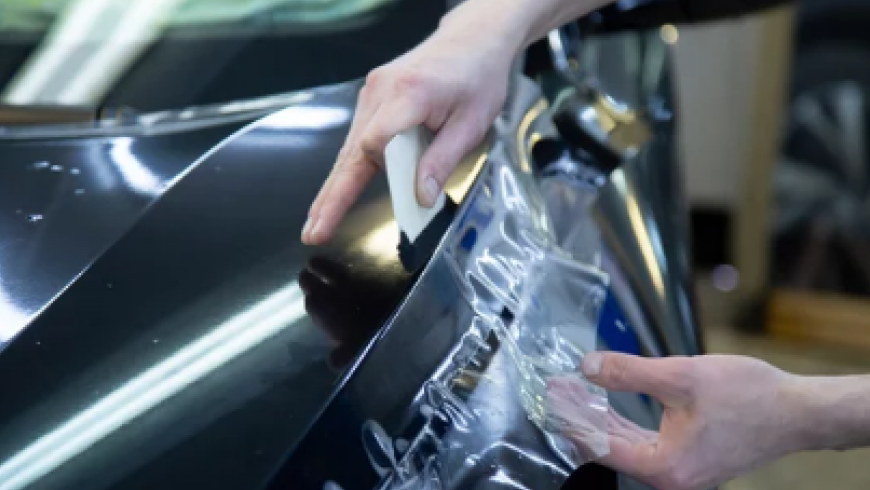How Ceramic Coating Protects Your Car's Paint

Ceramic coating has become a popular way to protect automotive paint and finishes. The liquid polymer bonds with the clear coat to create a protective layer against damage. Here's an in-depth look at how ceramic coating works to shield paint from environmental contaminants.
Forms a Glossy Protective Barrier
Ceramic coating products contain silicon dioxide (SiO2) or titanium dioxide (TiO2) nanoparticles blended into a liquid polymer carrier. When applied to the paint surface, these particles cross-link to form a tight chemical bond. As the coating cures, it hardens into a smooth glossy layer over the clear coat. This glass-like shield protects against scratches, water spots, UV rays, bird droppings, and road debris.
Makes the Paint Surface More Hydrophobic
Most ceramic coatings have hydrophobic properties, causing water to bead up and roll off the paint. This prevents moisture from penetrating the clear coat, reducing corrosion and water spotting. The hydrophobic layer also makes it easier to wash away dirt, dust, and contaminants stuck to the paint. This minimizes the need for frequent washing and waxing.
Blocks UV Rays from Damaging Paint
Exposure to the sun's UV rays can cause automotive paint to fade, chalk, and deteriorate over time. But ceramic coating contains UV blockers and absorbers that reflect and diffuse UV radiation. This protects the paint's color pigments and clear coat from photo-degradation. Even after years in the sun, cars with ceramic coating show minimal fading compared to unprotected paint.
Adds Scratch Resistance to the Surface
The hard nano-ceramic layer makes the paint more resistant to swirls, scratches, and key marks. Keys, tree branches, and normal automatic car washes are less likely to leave light scratches in the finish. The slick surface also prevents dust particles from grinding into the clear coat when wiping off. This allows the paint to maintain its flawless glossy appearance longer.
Repels Acidic Contaminants on Paint's Surface
Substances like bird droppings, tree sap, and acid rain eat away at automotive paint over time. But the ceramic coating's chemical structure neutralizes acidic contaminants on contact. Acid slides off before it gets a chance to etch or oxidize the paint surface. This protects even the delicate edges and vertical panels commonly damaged by acidic runoff.
Provides Stain and Chemical Resistance
In addition to acid, ceramic coatings repel other chemicals like fuel, oil, antifreeze, and brake fluid that may spill on a vehicle's painted exterior. These stain-causing substances bead up on contact rather than soaking into the clear coat. This allows prompt removal before any permanent discoloration can set in. Strong cleaning chemicals also have minimal effects on ceramic-coated paint.
In summary, ceramic coatings protect car paint through hydrophobic action, UV ray blocking, scratch resistance, and chemical protection. The durable glass-like shield locks in the showroom shine and keeps the paint looking new even after years of driving. Consider getting your vehicle professionally ceramic coated to maintain its exterior beauty.
Komentarze